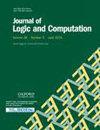Extension of constraint-procedural logic-generated environments for deep Q-learning agent training and benchmarking
IF 0.7
4区 数学
Q3 COMPUTER SCIENCE, THEORY & METHODS
引用次数: 0
Abstract
Abstract Autonomous robots can be employed in exploring unknown environments and performing many tasks, such as, e.g. detecting areas of interest, collecting target objects, etc. Deep reinforcement learning (RL) is often used to train this kind of robot. However, concerning the artificial environments aimed at testing the robot, there is a lack of available data sets and a long time is needed to create them from scratch. A good data set is in fact usually produced with high effort in terms of cost and human work to satisfy the constraints imposed by the expected results. In the first part of this paper, we focus on the specification of the properties of the solutions needed to build a data set, making the case of environment exploration. In the proposed approach, rather than using imperative programming, we explore the possibility of generating data sets using constraint programming in Prolog. In this phase, geometric predicates describe a virtual environment according to inter-space requirements. The second part of the paper is focused on testing the generated data set in an AI gym via space search techniques. We developed a Neuro-Symbolic agent built from the following: (i) A deep Q-learning component implemented in Python, able to address via RL a search problem in the virtual space; the agent has the goal to explore a generated virtual environment to seek for a target, improving its performance through a RL process. (ii) A symbolic component able to re-address the search when the Q-learning component gets stuck in a part of the virtual environment; these components stimulate the agent to move to and explore other parts of the environment. Wide experimentation has been performed, with promising results, and is reported, to demonstrate the effectiveness of the approach.深度q学习智能体训练和基准测试的约束程序逻辑生成环境的扩展
自主机器人可以用于探索未知环境并执行许多任务,例如检测感兴趣的区域,收集目标物体等。深度强化学习(RL)常用于训练这类机器人。然而,关于用于测试机器人的人工环境,缺乏可用的数据集,并且需要很长时间才能从头开始创建它们。实际上,一个好的数据集通常是在成本和人力方面付出很大努力来满足预期结果所施加的约束的。在本文的第一部分中,我们重点介绍了构建数据集所需的解决方案的属性规范,并以环境探索为例。在提出的方法中,我们探索了在Prolog中使用约束编程生成数据集的可能性,而不是使用命令式编程。在此阶段,几何谓词根据空间间需求描述虚拟环境。论文的第二部分重点是通过空间搜索技术在人工智能健身房里测试生成的数据集。我们从以下方面开发了一个神经符号代理:(i)一个用Python实现的深度q学习组件,能够通过强化学习解决虚拟空间中的搜索问题;agent的目标是在生成的虚拟环境中探索寻找目标,通过RL过程提高其性能。(ii)当Q-learning组件卡在虚拟环境的某个部分时,能够重新寻址搜索的符号组件;这些组件刺激agent移动到并探索环境的其他部分。已经进行了广泛的实验,结果令人鼓舞,并报告了该方法的有效性。
本文章由计算机程序翻译,如有差异,请以英文原文为准。
求助全文
约1分钟内获得全文
求助全文
来源期刊

Journal of Logic and Computation
工程技术-计算机:理论方法
CiteScore
1.90
自引率
14.30%
发文量
82
审稿时长
6-12 weeks
期刊介绍:
Logic has found application in virtually all aspects of Information Technology, from software engineering and hardware to programming and artificial intelligence. Indeed, logic, artificial intelligence and theoretical computing are influencing each other to the extent that a new interdisciplinary area of Logic and Computation is emerging.
The Journal of Logic and Computation aims to promote the growth of logic and computing, including, among others, the following areas of interest: Logical Systems, such as classical and non-classical logic, constructive logic, categorical logic, modal logic, type theory, feasible maths.... Logical issues in logic programming, knowledge-based systems and automated reasoning; logical issues in knowledge representation, such as non-monotonic reasoning and systems of knowledge and belief; logics and semantics of programming; specification and verification of programs and systems; applications of logic in hardware and VLSI, natural language, concurrent computation, planning, and databases. The bulk of the content is technical scientific papers, although letters, reviews, and discussions, as well as relevant conference reviews, are included.
 求助内容:
求助内容: 应助结果提醒方式:
应助结果提醒方式:


